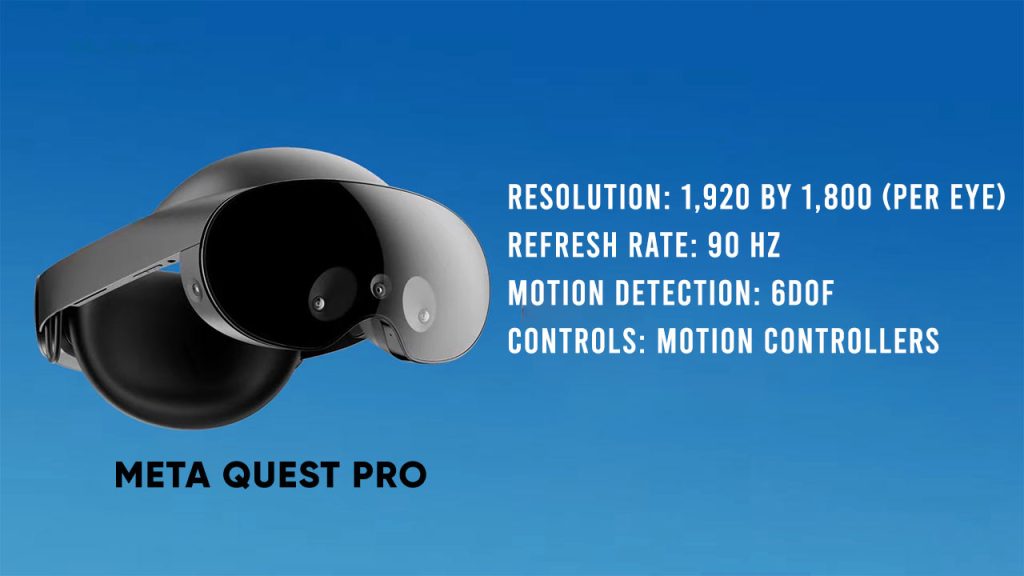This is the time of virtual reality. In recent years, virtual reality technology has advanced significantly, and better VR headsets are being introduced every year. The HTC Vive XR Elite and the Meta Quest Pro are two of the newest products that have drawn interest from VR fans. Both of these headsets were just launched, and the VR community has been buzzing about them. But which is superior? The design, functionality, and features of these two gadgets will be compared in this article along with their overall strengths and weaknesses. So, if you’re looking to buy a new VR headset but are divided between these two choices, keep reading to learn more.
The short answer is – “If you prefer a standalone device, the Oculus Quest would be a better choice, while if you have a powerful gaming PC and want a more high-fidelity experience, the HTC Vive XR Elite may be a better fit.”
HTC Vive XR Elite Vs Meta Quest Pro
The CES show this year was a flurry of new technology, and HTC’s most recent VR product, the Vive XR Elite, undoubtedly drew the attention of many tech aficionados. Some users have even referred to it as their favorite standalone VR headset. How does it compare to the Meta Quest Pro, though? We’ll examine the Vive XR Elite more closely in this comparison to determine whether it lives up to the hype.
Design
The HTC Vive XR Elite is a definite winner in terms of design. With their brand-new flagship VR headset, HTC has done a good job. Long gaming sessions are made possible by their convenient size and compact fit. Its overall attractiveness is also enhanced by the fact that it is a cordless VR headset with a number of practical functions. Large goggles are attached to the front of the headset, and a battery at the rear of the headrest distributes weight evenly and it makes the headset lighter on your head The removable battery cradle of the Vive XR Elite is what distinguishes it from other VR headsets.
The fact that you can utilize this wearable glass that resembles virtual reality technology while being able to use the battery cradle detached is even more astounding. The front section also has a detachable cloth gasket at the vision for a more comfortable VR experience. To make things even easier, it contains built-in diopters for users who wear glasses, allowing them to enjoy glasses-free VR. Stepless IPD adjustment is also available to assist users in adjusting the viewing angle to their comfort level.

Meta Quest Pro, on the other hand, is also a superior wireless VR headset. Although it’s a little bigger compared to Vive XR Elite, its ergonomic shape gives this VR a really premium look. Besides, it may look a bit bulky, but it’s really comfortable once you actually wear it the battery here is on the back strap, but, it is not detachable like the Vive XR Elite. Also, this one comes with manual IPD adjustment, and it doesn’t feature diopters, but it does support glasses. This means you can wear the Quest Pro over your glasses, and you won’t feel uncomfortable at all.
So it seems that Vive XR Elite from HTC definitely one step ahead when it comes to design. And even though the Quest Pro seems to lack some features, it definitely has one of the best aesthetics.
Specs & Features
From what we can observe, Vive XR Elite is more focused on entertainment rather than productivity. It is powered by a Snapdragon XR2 processor, 12GB RAM, and 128GB of internal storage to ensure a fast and smooth VR experience. As for the lens, it uses the Pancake Lenses with 1920 by 1920 resolution per eye, including 90 hertz of refresh rate and 110 degrees of field of view. Other than that, this VR is equipped with Hall sensors, G-sensors along with a Gyroscope and three-four optics camera, to ensure a splendid VR experience.

Quest Pro, however, is more of a productivity-based VR headset. It comes with really beefy internal hardware compared to the XR Elite. In order to deliver the most superior Mixed Reality experience, Meta specially worked with Qualcomm to design the XR2+ Processor, which is exclusively only available for the Quest Pro only. Besides that, it also includes 12GB RAM and up to 256GB of internal space compared to the Vive XR Elite. And Quest Pro also uses the pancake lens with 1800 by 1920 resolution per eye and 90 hertz of refresh rate for optimal viewing experience. Additionally, these lenses also feature 106 degrees of horizontal and 96 degrees of vertical field of view angle. And unlike the HTC’s one, Quest Pro is equipped with up to 10 VR and MR sensors to ensure the most advanced VR experience.
As we can see, Meta Quest Pro has a comparatively more powerful processor than the HTC Vive XR Elite. On the other hand, Meta Quest Pro can also track your facial expression apart from the Inside-Out tracking, whereas HTC Vive only supports the Inside-Out. But, HTC has mentioned they will add this feature later. So yes, in terms of internal specs and features, Meta Quest Pro definitely looks strong.

Wrapping Up
In verdict, it can be said that both the HTC Vive XR Elite and the Oculus Quest have their own unique features and advantages. The Vive XR Elite provides a more immersive and high-fidelity experience but requires a PC, while the Oculus Quest is a standalone device that offers portability and ease of use. Ultimately, the decision between the two comes down to individual preferences and needs, and users should consider their intended use case before making a choice.







